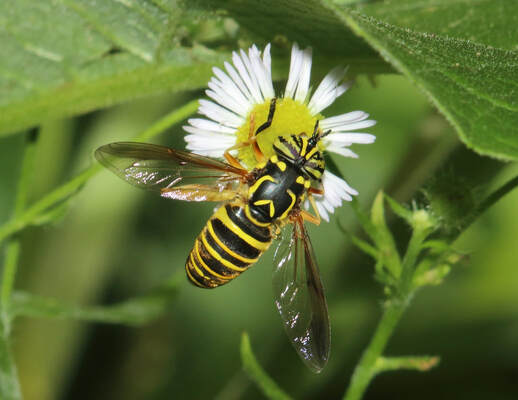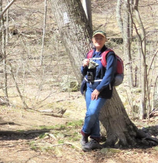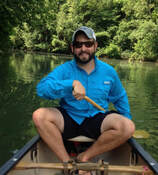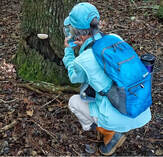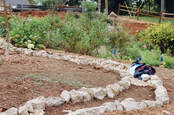What’s in Your Naturalist Knapsack?
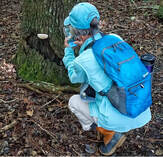 VMN volunteer Camille Grabb investigating a mushroom at Belle Isle State Park. Photo by Anne Clewell, VMN Northern Neck Chapter.
VMN volunteer Camille Grabb investigating a mushroom at Belle Isle State Park. Photo by Anne Clewell, VMN Northern Neck Chapter.
At the annual VMN conference this year a favorite activity was the chat room. The chat room was a sub-area of the conference where attendees could start discussions on topics of interest. Since the conference was virtual discussions could occur in real time or asynchronously.
Mary Jane Poulter had already been thinking about writing an article for the Central Piedmont Chapter’s Newsletter about a naturalist’s toolkit – “What do you carry when you go out into the field?” Marilyn Parks reached out to Mary Jane via the chat room and said she had been collecting information and was also thinking of writing a “What’s in Your Backpack” article for the Fairfax Chapter! The two shared emails and decided going forward with an article should be less of a story and more of a list.
Here is the list that was developed. The items that you decide to pack in your knapsack will vary with the focus of the activity, with the environment where the activity is occurring, with the time of the year, and with the planned length of the activity. Sometimes you may only need a light knapsack and other times you may want a backpack. Whatever the plan is for the activity, you should always plan for the unexpected!
So, what is in your knapsack? Did we forget anything? Feel free to send additions and comments to Mary Jane Poulter.
Possibilities for Your Toolkit
Gear
- Appropriate clothing – long/short pants, long sleeved shirts, shoes that can get wet, hat, gloves, good walking shoes/water shoes
- Bug, tick spray
- Sunscreen and lip balm
- Tissues
- Zip lock bags to keep knapsack items dry and organized
- Plastic bags for picking up litter
- Large plastic or “dry bag” if needed for protecting backpack from wet ground or rain
- Water
- Food bars
- Identification
- Driver’s license
- Health insurance cards
- Emergency contact phone numbers
- Your VMN emergency contact card (consider tucking it into your cell phone cover)
Safety Equipment
- Smartphone, optionally with portable charger or extra battery.
- Map and compass and/or GPS if out of cell range
- Basic first aid kit (band-aids, antiseptic wipes, butterfly bandages, gauze and tape, antihistamine for allergic reactions, and an emergency blanket)
- Emergency reflective blanket
- Flashlight
- Few pieces of hard candy if needed for diabetic need
- VMN emergency card and incident report form
Observational Equipment
- Journal and pencils/pen
- Field Guide
- Hand lens
- Binoculars
- Dip net
- Small tape measure or ruler (to document size of tracks, leaves, and other; to provide perspective; and for later display and identification)
- Flashlight or headlamp
- Poker/ chop stick for poking into a crevice
Apps for identification
- Seek
- Leaf
- iNaturalist
- eBird
- Merlin
- Flora of Virginia
Apps for geography/navigation
- Apple Maps
- Google Maps
- Google Earth
- Hiking or map app for offline use
What’s in Your Naturalist Knapsack? Read Post »

